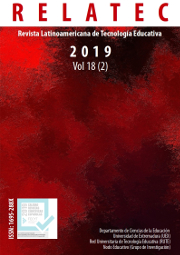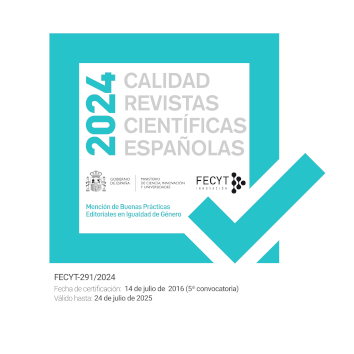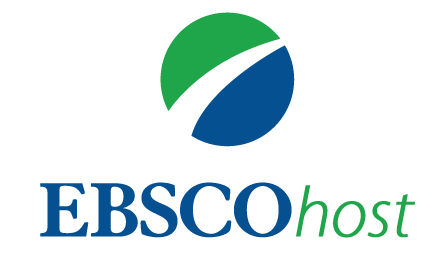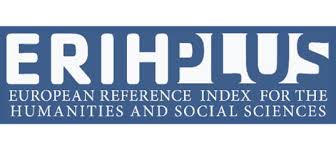Enhancing computational thinking skills in early childhood education: Learning experience through tangible and graphical interfaces
DOI:
https://doi.org/10.17398/1695-288X.18.2.133Keywords:
Computational Thinking, Programming, Robotics, Preschool EducationAbstract
The development and integration of digital technology, in the current social context, makes it necessary to design and implement educational proposals that contribute to strengthening the teaching-learning processes through resources and didactic materials that provide dynamism, flexibility and innovation. One of the approaches that is gaining popularity in the international scenario is to approach the teaching of technology, programming and other digital skills such as computational thinking from an early age. This paper presents some of the results achieved through the development of a formative experience to foster the learning of computational thinking in early childhood education. The study corresponds to a quasi-experimental design with pretest-postest measures, without control group. The sample of participants was 44 students and 2 teachers, from a concerted school, in Salamanca, Spain, during the period 2017-2018. The activities consisted of solving problems with programming challenges using a tangible and a graphical interface. The data were collected through a rubric, questionnaires and field diary. The general results show the existence of differences between pretest and postest, which indicates that an advance was generated in reference to the learning of computational thinking through the explored characteristic. In addition, there is a positive acceptance of the activities between students and teachers. The study represents an initial assessment of the development of programming and computational thinking skills in young children using tangible and graphical learning interfaces.
Downloads
References
Basogain-Olabe, X., Olabe-Basogain, M. Á., y Olabe-Basogain, J. C. (2015). Pensamiento Computacional a través de la Programación: Paradigma de Aprendizaje. Red, 46(6), pp.1–33. https://doi.org/10.6018/red/46/6
Bers,M. (2008). Blocks to robots: Learning with technology in the early childhood classroom. New York: Teachers College Press
Bers, M.U. (2010). The TangibleK Robotics program: Applied computational thinking for young children. Early Childhood Research & Practice, 12(2). https://bit.ly/2RZ3B11
Bers, M. U. (2018). Coding, playgrounds and literacy in early childhood education: The development of KIBO robotics and ScratchJr. Presentada IEEE Global Engineering Education Conference, EDUCON, Tenerife, Spain., 2094–2102. Resumen recuperado de https://doi.org/10.1109/EDUCON.2018.8363498
Bers, M. U., Flannery, L., Kazakoff, E. R., y Sullivan, A. (2014). Computational thinking and tinkering: Exploration of an early childhood robotics curriculum. Computers and Education, 72, 145–157. https://doi.org/10.1016/j.compedu.2013.10.020
Bers, M. U., González-González, C., y Armas–Torres, M. B. (2019). Coding as a playground: Promoting positive learning experiences in childhood classrooms. Computers & Education, 138, 130-145. https://doi.org/10.1016/j.compedu.2019.04.013
Brennan, K., y Resnick, M. (2012, April). New frameworks for studying and assessing the development of computational thinking. In Proceedings of the 2012 annual meeting of the American Educational Research Association, Vancouver, Canada (Vol. 1, p. 25).
Bruni, F., y Nisdeo, M. (2017). Educational robots and children’s imagery: A preliminary investigation in the first year of primary school. Research on Education and Media, 9(1), 37-44. https://doi.org/cxnq
Campbell, D., y Stanley, J. (1993). Diseños experimentales y cuasiexperimentales en la investigación social. Buenos Aires: Amorrortu.
Chalmers, C. (2018). International Journal of Child-Computer Interaction Robotics and computational thinking in primary school. International Journal of Child-Computer Interaction, 17, 93–100. https://doi.org/10.1016/j.ijcci.2018.06.005
Chen, G., Shen, J., Barth-Cohen, L., Jiang, S., Huang, X., y Eltoukhy, M.M. (2017). Assessing Elementary students’ computational thinking in everyday reasoning and robotics programming. Computers and Education, 109, 162-175. https://doi.org/10.1016/j.compedu.2017.03.001
Cheng, Y. W., Sun, P. C., y Chen, N. S. (2018). The essential applications of educational robot: Requirement
analysis from the perspectives of experts, researchers and instructors. Computers & education, 126, 399-416. https://doi.org/10.1016/j.compedu.2018.07.020
Chiara, M., Lieto, D., Inguaggiato, E., Castro, E., Cecchi, F., Cioni, G., … y Dario, P. (2017). Educational Robotics intervention on Executive Functions in preschool children: A pilot study. Computers in Human Behavior, 71, 16–23. https://doi.org/10.1016/j.chb.2017.01.018
Cejka, E., Rogers, C., y Portsmore, M. (2006). Kindergarten robotics: using robotics to motivate math,science, and engineering literacy in elementary school. International Journal of Engineering Education, 22(4), 711–722.
Cohen, J. (1988). Statistical power analysis for the behavioral sciences. New York: Academic Press. 2da. Edición.
Elkin, M., Sullivan, A., y Bers, M. U. (2014). Implementing a robotics curriculum in an early childhood Montessori classroom. Journal of Information Technology Education: Innovations in Practice, 13, 153–169.
García-Peñalvo, F. J., Hernández-García, Á., Conde-González, M. Á., Fidalgo-Blanco, Á., S., y Lacleta, M. L., Alier-Forment, M., Llorens-Largo, F., y Iglesias-Pradas, S. (2015). Mirando hacia el futuro: Ecosistemas tecnológicos de aprendizaje basados en servicios. Recuperado de http://rua.ua.es/dspace/handle/10045/51427
García-Peñalvo, F.J., Rees, A.M., Hughes, J., Jormanainen, I., Toivonen, T., y Vermeersch, J. (2016). A survey of resources for introducing coding into schools. Proceedings of the Fourth International Conference on Technological Ecosystems for Enhancing Multiculturality (TEEM’16) (pp.19-26). Salamanca, Spain, November 2-4, 2016. New York: ACM. https://doi.org/10.1145/3012430.3012491
Muñoz-Repiso, A. G. V., & González, Y. A. C. (2019). Robótica para desarrollar el pensamiento computacional en Educación Infantil. Comunicar: Revista científica iberoamericana de comunicación y educación, (59), 63-72. https://doi.org/10.3916/C59-2019-06
González, Y. A. C., & Muñoz-Repiso, A. G. V. (2017, November). Educational robotics for the formation of programming skills and computational thinking in childish. In 2017 International Symposium on Computers in Education (SIIE) (pp. 1-5). IEEE. https://doi.org/10.1109/SIIE.2017.8259652
González, Y. A. C., & Muñoz-Repiso, A. G. V. (2018, October). A robotics-based approach to foster programming skills and computational thinking: Pilot experience in the classroom of early childhood education. In Proceedings of the Sixth International Conference on Technological Ecosystems for Enhancing Multiculturality (pp. 41-45). ACM. https://doi.org/10.1145/3284179.3284188
Hernández Sampieri, R., Fernández-Collado. C., y Baptista-Lucio. P. (2014). Metodología de la investigación. México: McGraw-Hill Education.
Kalelioğlu, F. (2015). A new way of teaching programming skills to K-12 students: Code.org. Computers and Human Behavior, 52, 200-210. https://doi.org/10.1016/j.chb.2015.05.047.
Karampinis, T. (2018). Robotics-based learning interventions and experiences from our implementations in the RobESL framework. International Journal of Smart Education and Urban Society, 9(1), 13-24. https://doi.org/cxnt
Kazakoff, E. R., y Bers, M. U. (2014). Put Your Robot in, Put Your Robot out: Sequencing through Programming Robots in Early Childhood. Journal of Educational Computing Research, 50(4), 553–573. https://doi.org/10.2190/EC.50.4.f
Kucuk, S., y Sisman, B. (2017). Behavioral patterns of elementary students and teachers in one-to-one robotics instruction. Computers & Education, 111, 31-43. http://dx.doi.org/10.1016/j.compedu.2017.04.002
Moreno, I., Muñoz, L., Serracín, J. R., Quintero, J., Pittí Patiño, K. y Quiel, J. (2012). La robótica educativa, una herramienta para la enseñanza-aprendizaje de las ciencias y las tecnologías. Revista Teoría de la Educación: Educación y Cultura en la Sociedad de la Información. 13(2), 74-90. Recuperado de http://campus.usal.es/~revistas_trabajo/index.php/revistatesi/article/view/9000/9245
Olsen, W. (2004). Triangulation in social research: qualitative and quantitative methods can really be mixed. Developments in sociology, Causeway Press Ltd., 20, pp.103-118. Recuperado de https://cutt.ly/8wLEw6P
Papadakis, S., Kalogiannakis, M., y Zaranis, N. (2016). Developing fundamental programming concepts and computational thinking with ScratchJr in preschool education: a case study. International Journal of Mobile Learning and Organization, 10(3), 187. https://doi.org/10.1504/ijmlo.2016.077867
Resnick, M., y Rosenbaum, E. (2013). Designing for tinkerability. In M. Honey & D.E. Kanter (Eds.), Design, make, play: Growing the next generation of STEM innovators (pp.163-181). New York: Routledge.
Scaradozzi, D., Sorbi, L., Pedale, A., Valzano, M., y Vergine, C. (2015). Teaching robotics at the primary school: an innovative approach. Procedia-Social and Behavioral Sciences, 174, 3838-3846. https://doi.org/10.1016/j.sbspro.2015.01.1122
Strawhacker, A., Lee, M., y Bers, M. U. (2018). Teaching tools, teachers’ rules: exploring the impact of teaching styles on young children’s programming knowledge in ScratchJr. International Journal of Technology and Design Education, 28(2), 347–376. https://doi.org/10.1007/s10798-017-9400-9
Strawhacker, A., Sullivan, A., y Bers, M. U. (2013, June). TUI, GUI, HUI: is a bimodal interface truly worth the sum of its parts?. In Proceedings of the 12th International Conference on Interaction Design and Children (pp. 309-312). ACM.
Sullivan, A., y Bers, M. U. (2016). Robotics in the early childhood classroom: learning outcomes from an 8-week robotics curriculum in pre-kindergarten through second grade. International Journal of Technology and Design Education, 26(1), 3–20. https://doi.org/10.1007/s10798-015-9304-5
Sullivan, A. A., Bers, M. U., y Mihm, C. (2017). Imagining, playing, and coding with KIBO: using robotics to foster computational thinking in young children. Siu-cheung KONG.The Education University of Hong Kong, Hong Kong, 110.
Valverde-Berrocoso, J., Fernández-Sánchez, M., y Garrido-Arroyo, M.C. (2015). El pensamiento computacional y las nuevas ecologías del aprendizaje. Red, 46, 1-18. https://doi.org/10.6018/red/46/3
Wing, J.M. (2006). Computational thinking. Communications of the ACM, 49(3), 33-35. https://bit.ly/2ASUK9Q
Wing, J.M. (2008). Computational thinking and thinking about computing. Philosophical Transactions. Series A, Mathematical, Physical, and Engineering Sciences, 366(1881), 3717-3725. https://doi.org/10.1098/rsta.2008.0118
Zapata-Ros, M. (2015). Pensamiento computacional: Una nueva alfabetización digital. Red, 46, 1-47. https://doi.org/10.13140/RG.2.1.3395.8883
Downloads
Published
Issue
Section
License
Authors who publish in this journal accept the following conditions:
1. The Author retains copyright in the article. Upon acceptance of the article, the author shall grant to the Publisher the right of first publication of the article. with the dcoument registered with the Creative Commons Attribution-NonCommercial-NoDerivative 4.0 International (CC BY-NC-ND) license, which allows to third parties to use what is published whenever they mention the authorship of the work and the first publication in this journal.
2. Authors can make other independent and additional contractual agreements for the non-exclusive distribution of the article published in this journal (eg, include it in an institutional repository or publish it in a book) provided they clearly indicate that the work was published for the first time in this journal.
3. Authors are allowed and recommended to publish their work on the Internet (for example on institutional or personal pages) before and during the review and publication process, as it can lead to productive exchanges and a greater and faster diffusion of published work (see The Effect of Open Access).









